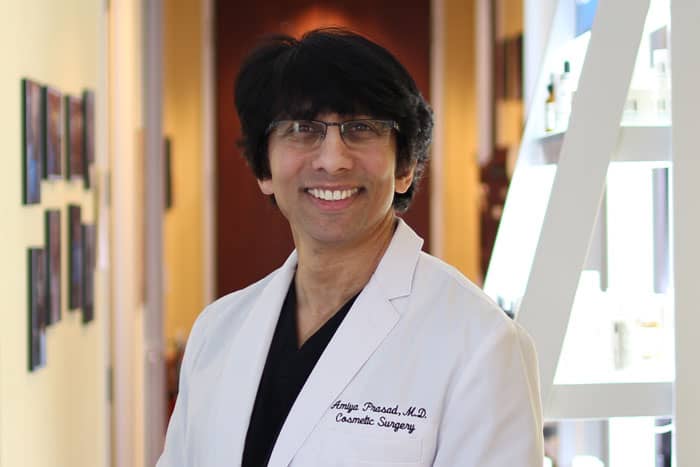Puffy under eye bags are a concern for many people who come to my practice. Most of their concerns revolve around how tired or older their eye bags make them appear, as well as how frequently friends and family inquire about whether they’re getting enough rest, or having a bad day. The most common complaint I hear from patients is that they are tired of looking tired.
In reality, persistent eye bags have nothing to do with the amount of sleep you get. Eye bags are an anatomical condition caused by lower eyelid fat prolapse. Lower eyelid fat prolapse occurs when the fat pockets around the eyes push forward, resulting in a bulge or herniation of fat that gives the appearance of puffiness and tiredness.
Eye Bag Removal Surgery Before and After
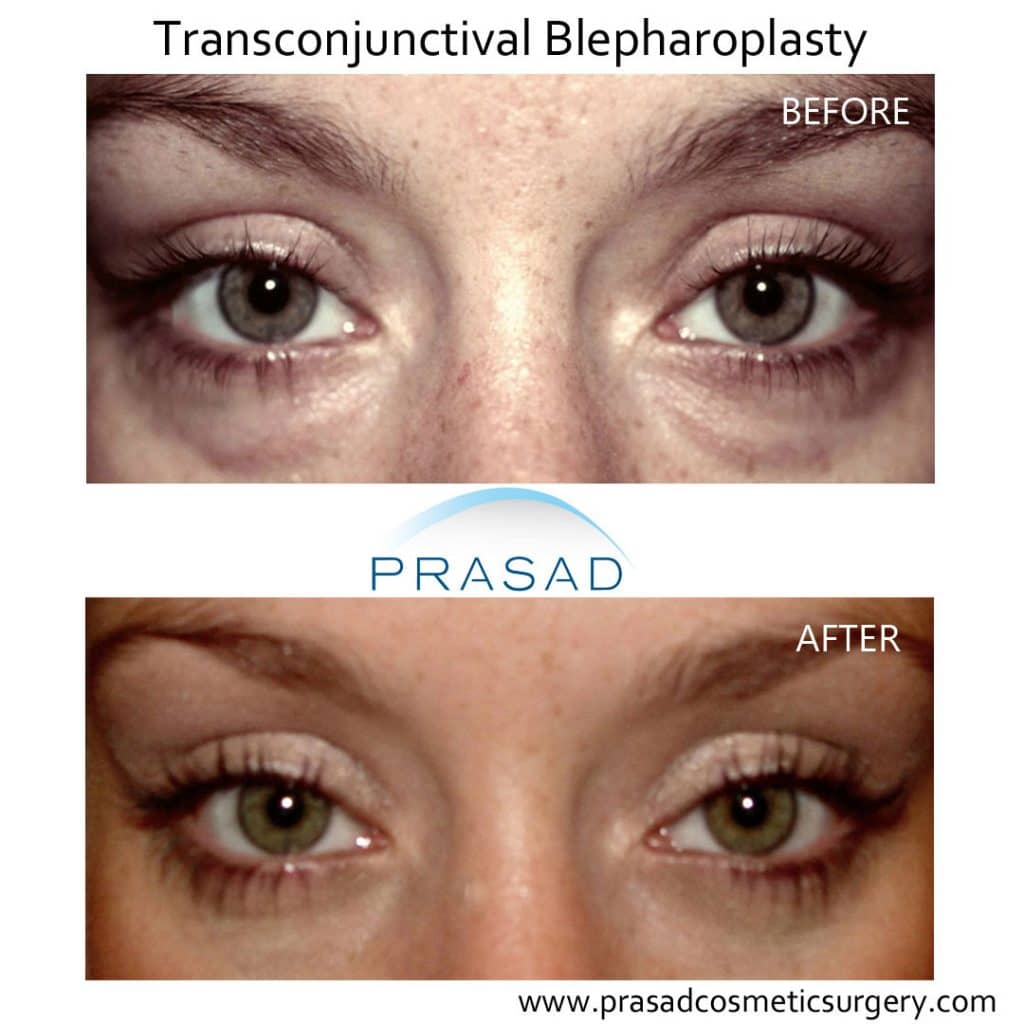
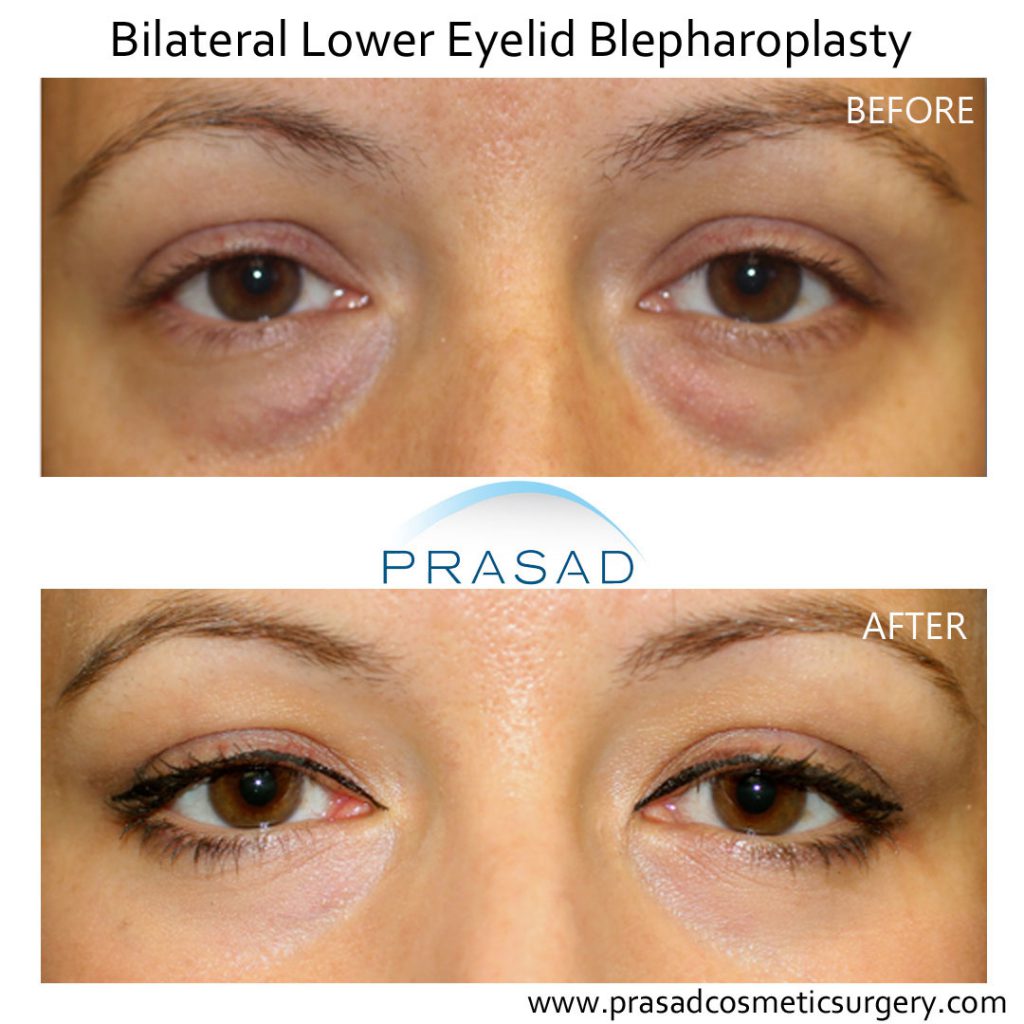

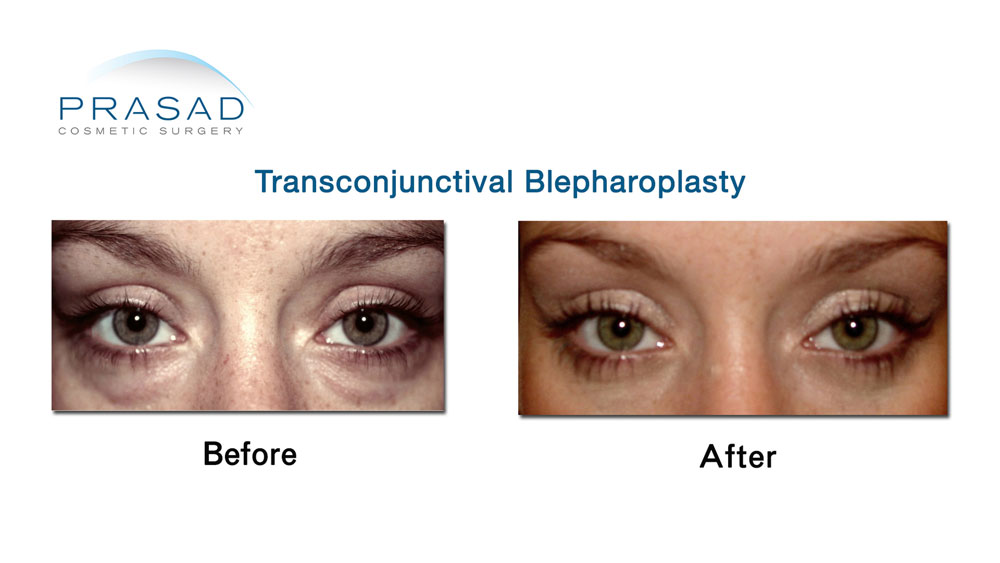
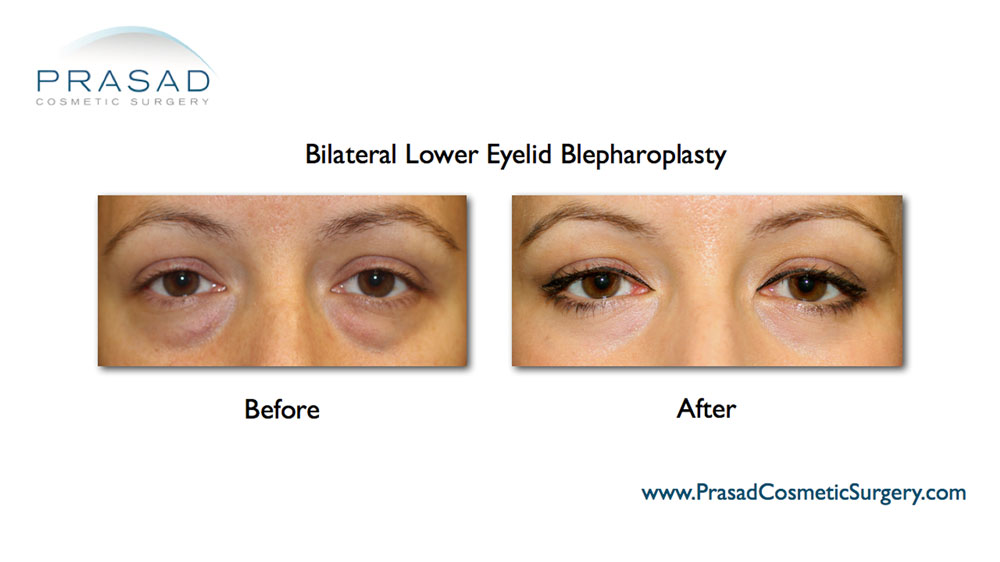
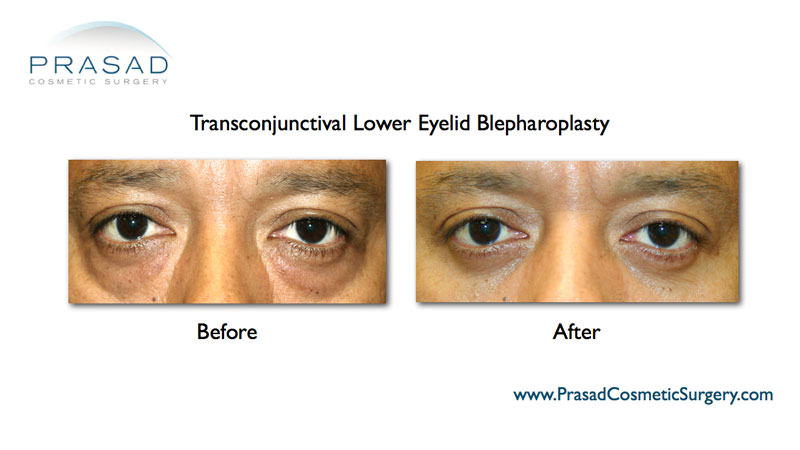
Depending on the severity of the under eye bags, there are a few options. Mild under eye bags can be improved by injecting filler into the hollow areas of the tear trough, which helps to conceal the puffiness. More pronounced under eye bags, on the other hand, will require eye bag removal surgery.
Significant under eye bags cannot be treated with filler in the same way that mild under eye bags can. This is due to the fact that adding volume to an area with a prominent eye bag will only make it appear puffier than it already is. Surgery is the most definitive procedure for permanently puffy eye bags, and it can help prominent eye bags more effectively than injectable fillers can. The goal of eye bag removal surgery is to remove and sculpt the fat pockets so that you have a smoother contour, as if you never had under eye bags.
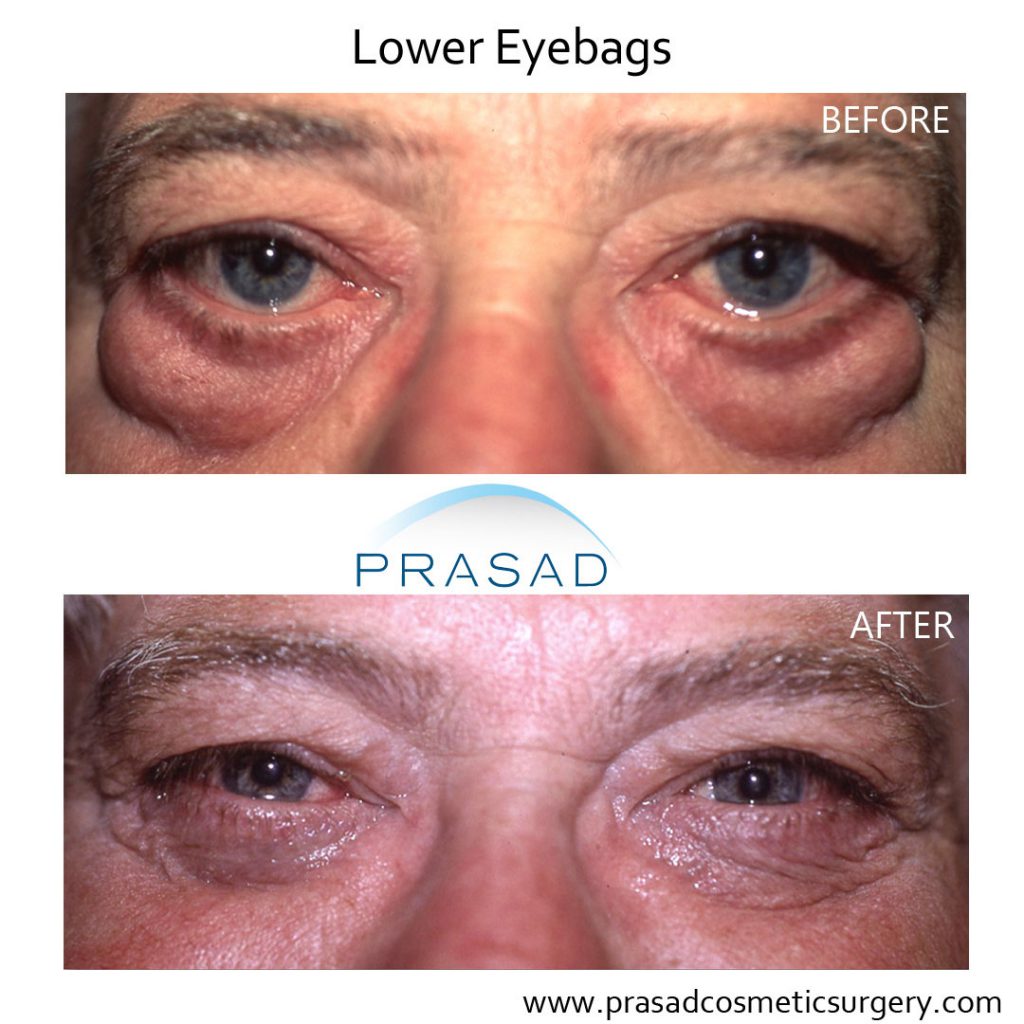
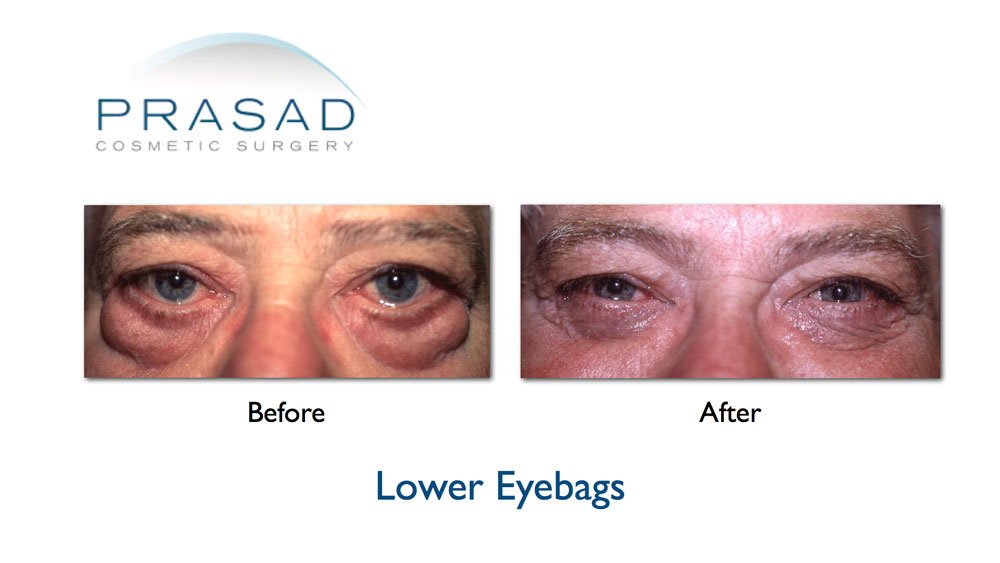
Two Methods of Surgery to Remove Bags Under Eyes
Concerns about the risks of under eye bag surgery are something I address in my practice on a daily basis. My practice is heavily focused on assisting people in improving the appearance of their under eye area. Eye bag removal surgery is a very common procedure that I perform in my practice almost every day.
The transcutaneous method, and the transconjunctival method are the two approaches to eye bag surgery. The transcutaneous approach entails making an incision on the outside of the lower eyelid, just beneath the eyelashes, to access the fat pockets. In contrast, the transconjunctival method addresses fat pockets through the inside of the lower eyelid, requiring no external incision.
In my practice, I usually use the transconjunctival method. Although technically more difficult, I have found that this approach consistently produces positive results.
Disadvantages and Risks of Using Transcutaneous Method
When doctors use the transcutaneous method, fat is removed, and often what is perceived as excess skin is trimmed in an attempt to reduce wrinkles, before sutures are used to close the lower eyelid incision. The delicate support system of the lower eyelid may be jeopardized by this approach that cuts through the eyelid skin, and the muscle to reach the fat fat pockets. While a well-performed surgery can conceal the external incision, a scar of varying visibility remains where the incision was closed. Unnecessary skin removal can result in a skin shortage, which can lead to complications like ectropion, and contribute to eyelid retraction.
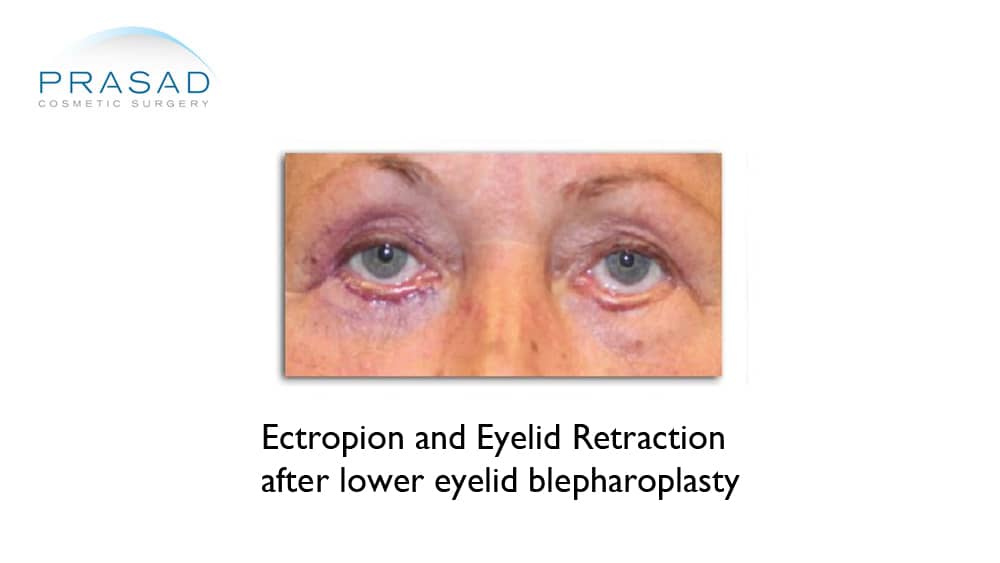
Ectropion is the condition in which the lower eyelid becomes everted, or turned outwards; while eyelid retraction is the downward displacement of the lower eyelid, resulting in a rounded appearance of the lower eyelids and excessive exposure of the white part of the eyes, known as scleral show. In some cases, the eyelids are unable to fully close, and the natural distribution of tears is disrupted, exposing the inner eyelid and the eye itself to irritation or infection.
Transconjunctival Method
As previously stated, I prefer the transconjunctival approach which is a cutting-edge, minimally invasive strategy. This method allows me to treat the fat pockets without jeopardizing the integrity of the lower eyelid support structures, so the natural eye shape is preserved, and there is less trauma around the eyes, resulting in less bruising and swelling. There is no scar because there is no external incision, and you can appear natural, even up close, as if you’ve never had surgery, and never had eye bags.
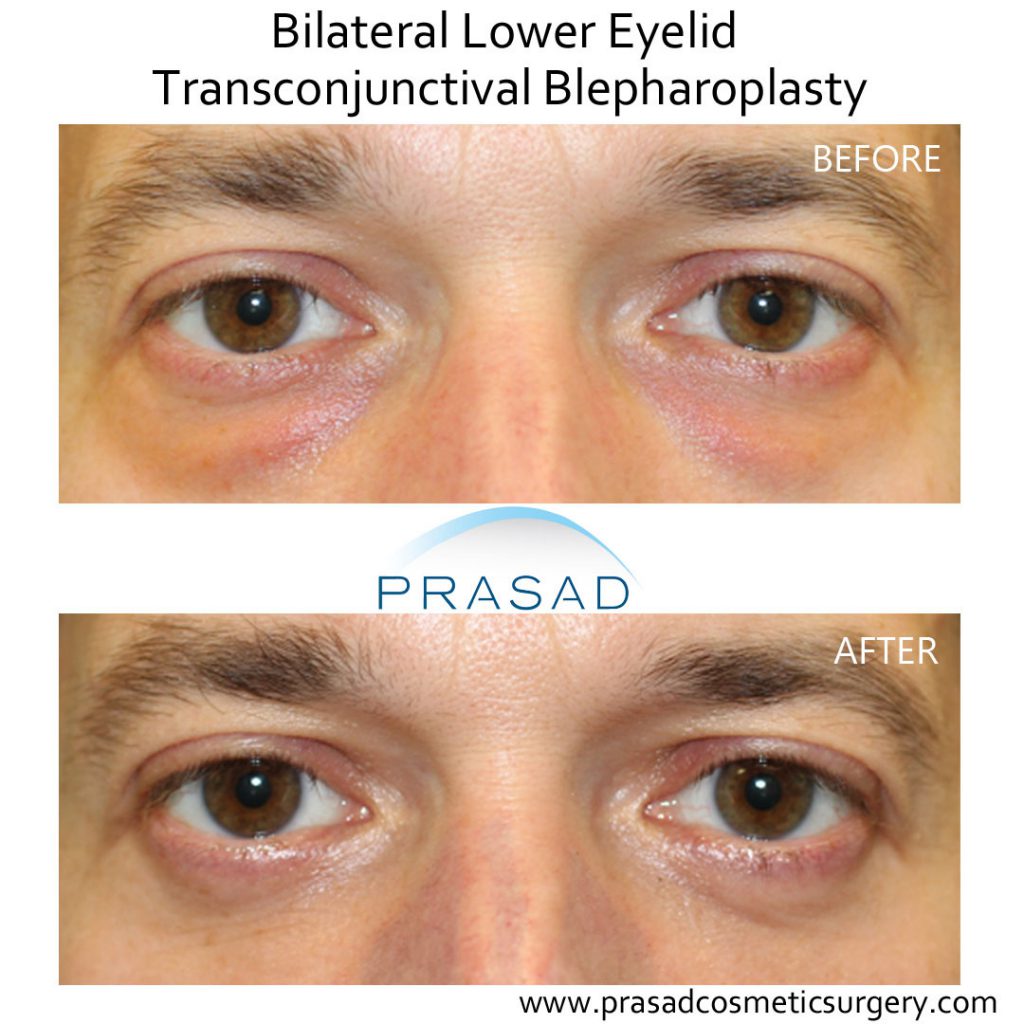
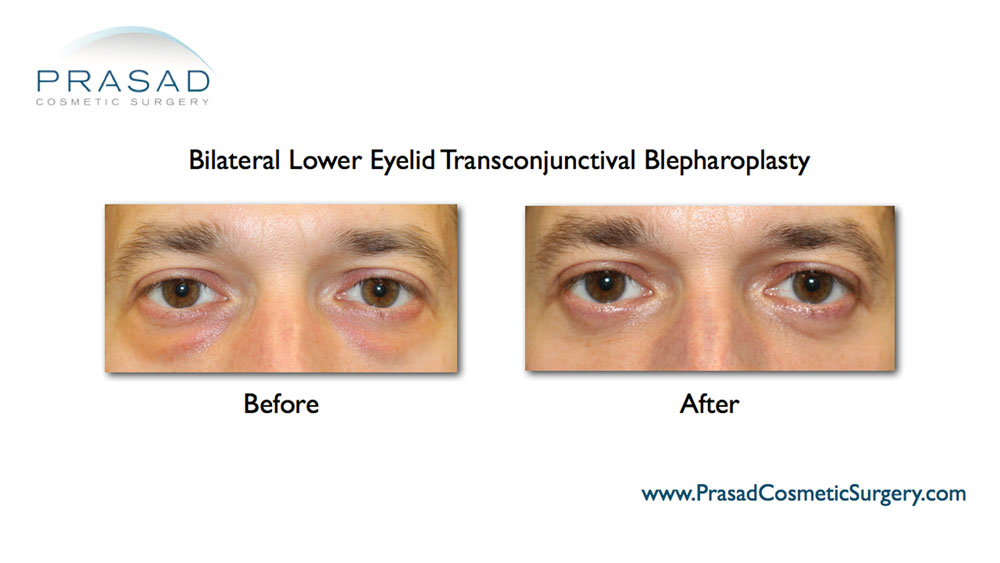
Under Eye Wrinkles Treatment
Recovery
In my practice, I perform transconjunctival blepharoplasty with LITE IV sedation under local anesthesia. This allows my patients to recover faster, and return home after the procedure. Many of my patients say that if they had known it would be this simple for them, they would have had the surgery much sooner.
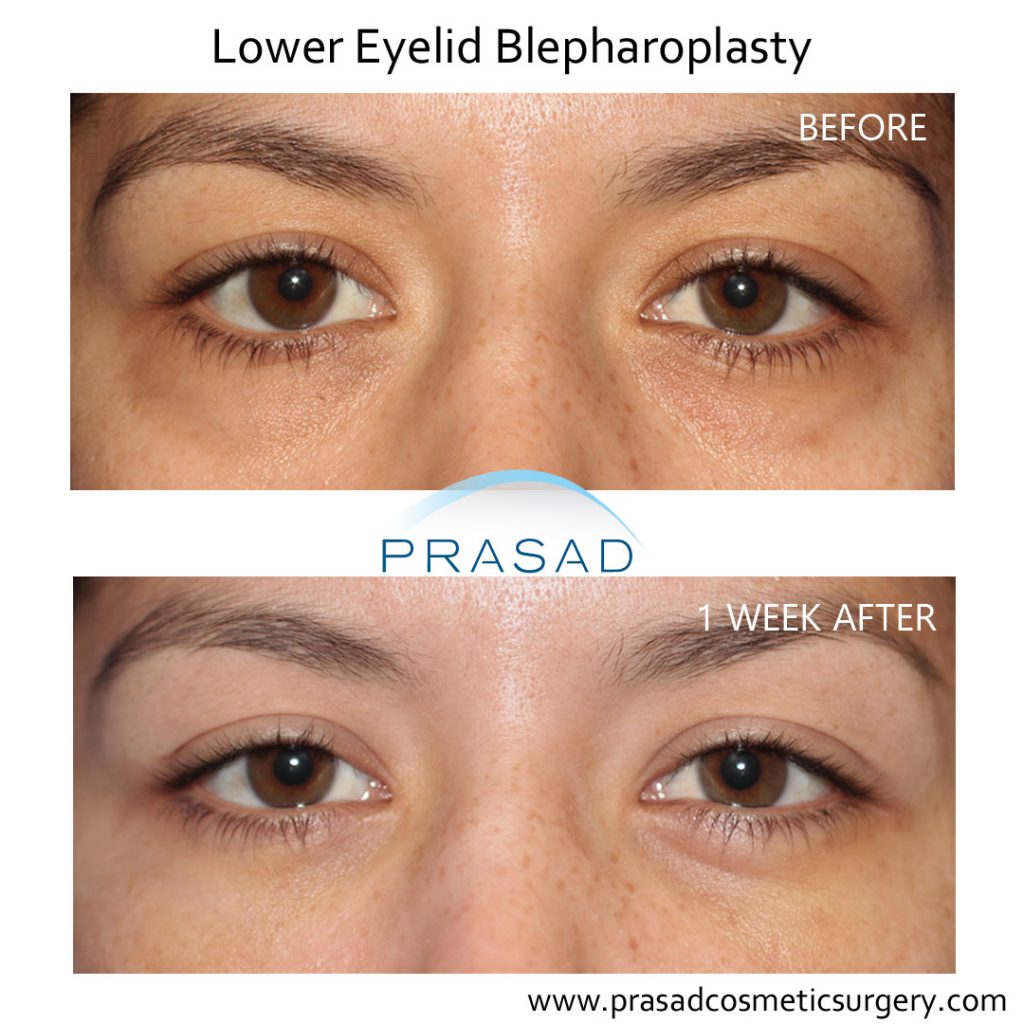
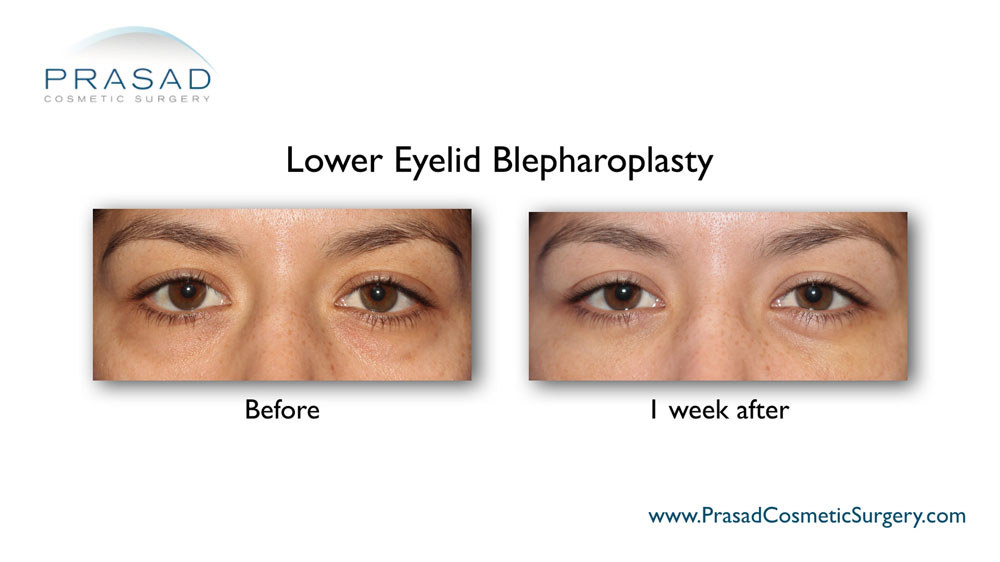
Patients typically return to work and daily life in one week, if not less. Most of our patients return in a week with minimal swelling, and almost no bruising.
As with any type of surgery, there are risks with eye bag surgery. These risks can be reduced by selecting a doctor who possesses a high level of expertise, experience, and artistry.
Eye Bag Removal Surgery NYC and Long Island New York
Dr. Amiya Prasad is a Board-certified cosmetic surgeon, and Fellowship-trained oculofacial plastic & reconstructive surgeon. He’s been in practice in Manhattan, and Long Island for over 25 years. He first trained in eye surgery before training in cosmetic and reconstructive surgery of the eyes.
To schedule a consultation, fill up the form below, or you may call any of our offices at (212) 265-8877 in Manhattan, New York City or (516) 742-4636 in Garden City, Long Island, New York; or Vienna, Virginia at (703) 356-1336.

